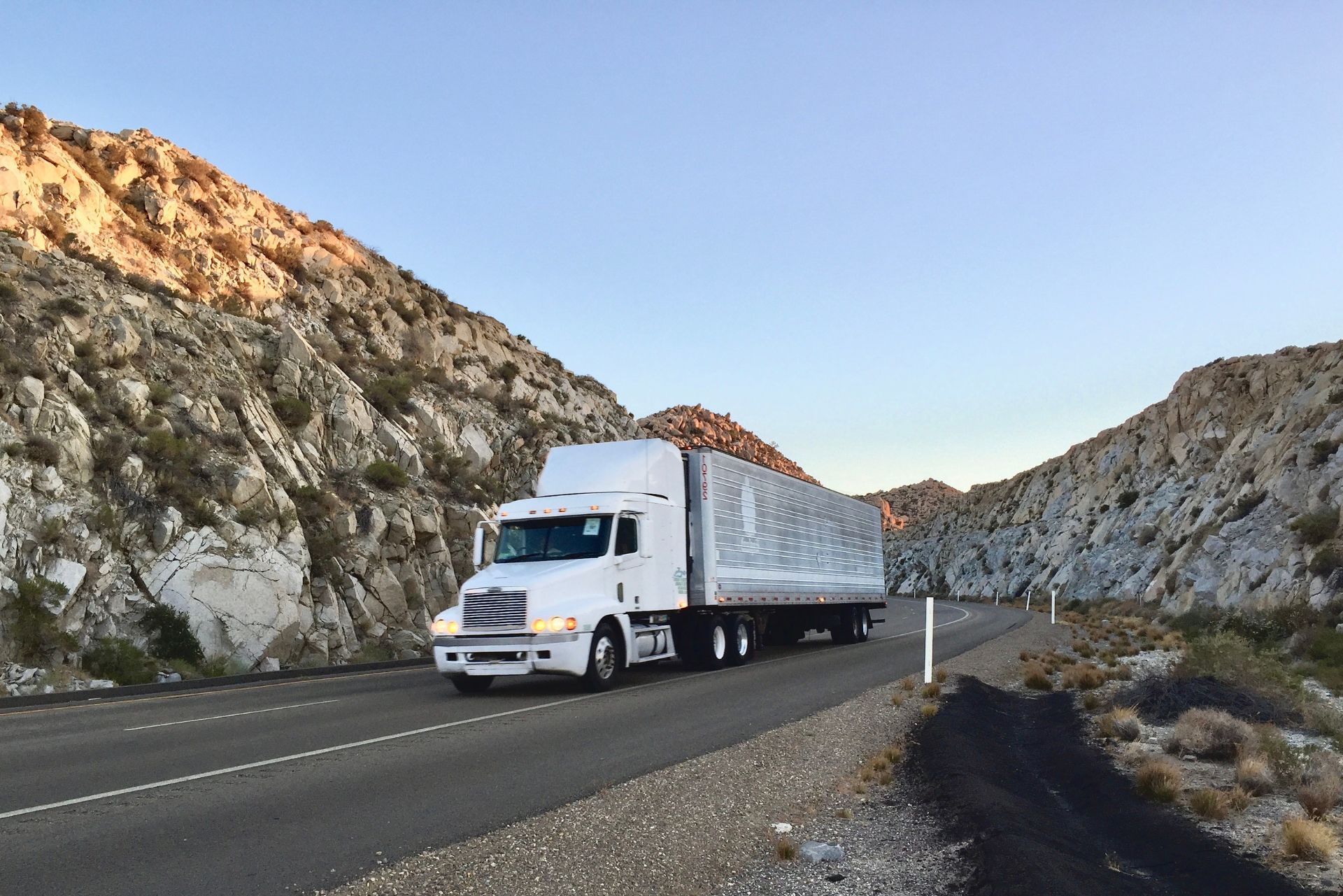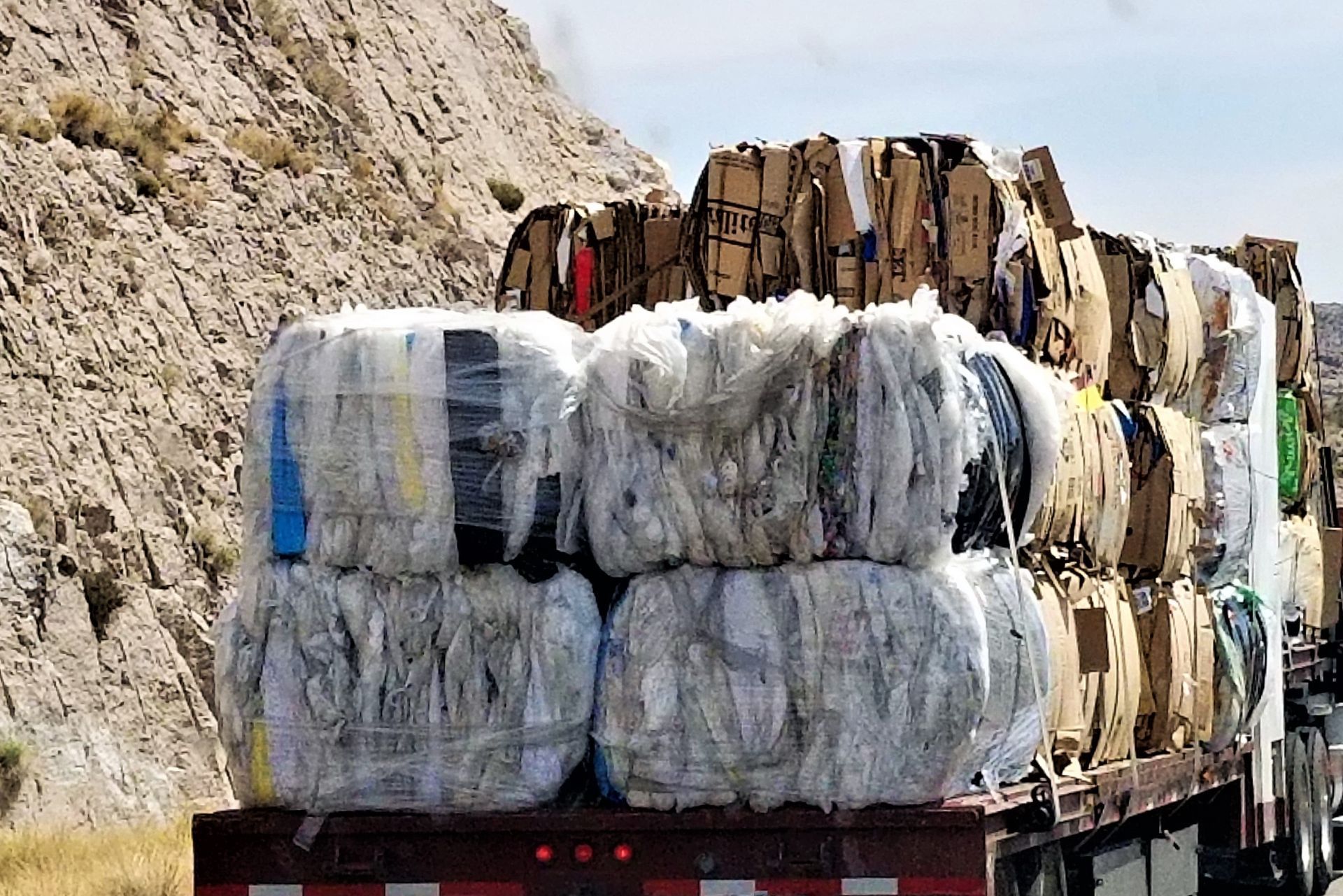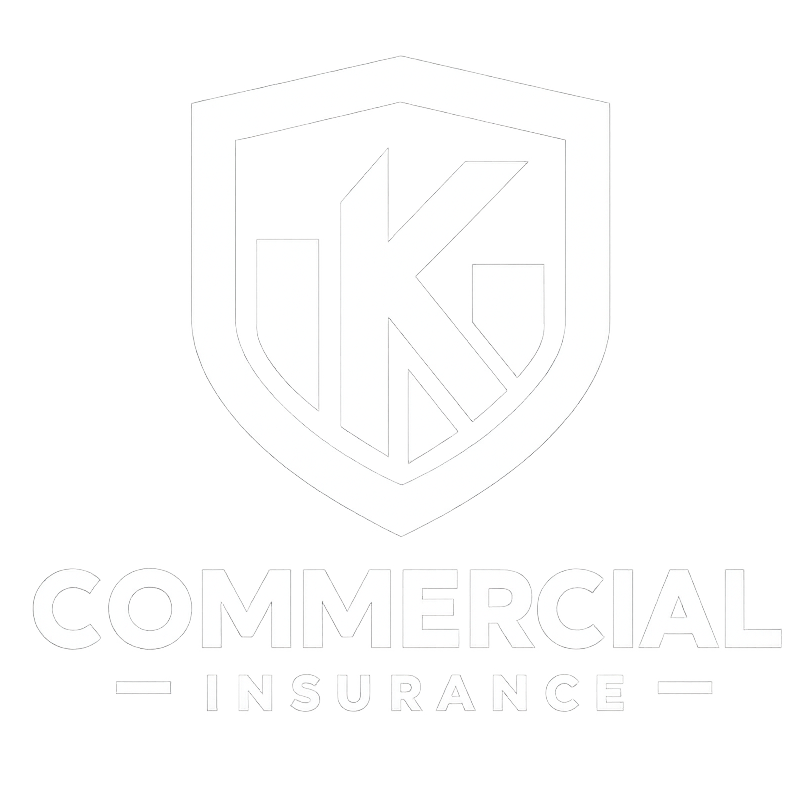Top 3 Recommended Policies

In the world of logistics and transportation, understanding the nuances of Full Truckload (FTL) insurance is crucial for both carriers and shippers. As businesses increasingly rely on trucking to move goods, the need for comprehensive insurance coverage becomes paramount. This article aims to provide a detailed overview of FTL insurance, covering its importance, types, costs, and how to choose the right policy.
What is Full Truckload (FTL) Insurance?
Full Truckload (FTL) insurance is a specialized form of coverage designed for shipments that occupy an entire truck's capacity. Unlike Less Than Truckload (LTL) shipments, where multiple shippers share the space, FTL shipments are dedicated to a single customer's cargo. This distinction is vital when considering insurance, as the risks and coverage needs can vary significantly.
FTL insurance protects against various risks that can occur during transportation, including damage, theft, and loss of goods. It ensures that shippers can recover their financial losses in case of unfortunate events, providing peace of mind and security in the shipping process. Additionally, FTL insurance often covers a broader range of incidents compared to standard cargo insurance, making it a more comprehensive option for businesses that frequently ship large volumes of goods.
Why is FTL Insurance Important?
The importance of FTL insurance cannot be overstated. For businesses that rely on timely and safe delivery of their products, having adequate insurance coverage is essential. Here are a few reasons why FTL insurance is crucial:
- Financial Protection: In the event of damage or loss, FTL insurance provides financial compensation, helping businesses avoid significant losses.
- Legal Compliance: Many states and countries require carriers to have specific insurance coverage, making it essential for legal compliance.
- Customer Trust: Having insurance coverage can enhance customer trust, as it demonstrates a commitment to safeguarding their goods.
Moreover, FTL insurance can also play a pivotal role in risk management strategies for businesses. By understanding the specific risks
associated with their shipments, companies can tailor their insurance policies to better meet their unique needs. This proactive approach not only helps in mitigating potential losses but also allows businesses to allocate resources more efficiently, ensuring that they are prepared for any unforeseen circumstances that may arise during transit.
In addition to the financial and legal benefits, FTL insurance can also streamline the claims process. With a dedicated truckload, the logistics are often simpler, making it easier to document and substantiate claims when issues occur. This efficiency can lead to quicker resolutions, ensuring that businesses can continue their operations with minimal disruption. Furthermore, many insurance providers offer additional services, such as risk assessments and loss prevention strategies, which can further enhance the overall shipping experience and provide businesses with valuable insights into their logistics operations.

Types of FTL Insurance Coverage
FTL insurance comes in various forms, each tailored to meet different needs and risks associated with transporting goods. Understanding these types can help businesses select the most appropriate coverage for their operations.
1. Cargo Insurance
Cargo insurance is one of the most common types of FTL insurance. It covers the goods being transported against risks such as theft, damage, or loss during transit. This type of insurance is essential for shippers who want to protect their investments and ensure that they can recover costs if something goes wrong.
Different policies may cover different types of cargo, so it’s crucial to read the fine print and ensure that the specific goods being transported are included in the coverage. For instance, high-value items like electronics or fine art may require specialized cargo insurance that provides additional protections. Additionally, businesses should consider the geographical areas they operate in, as some policies may have exclusions based on regions known for higher theft rates or natural disasters.
2. Liability Insurance
Liability insurance protects the carrier against claims arising from accidents or incidents that occur during transportation. This includes coverage for bodily injury, property damage, and legal fees that may arise from accidents involving the truck. It is a critical component of FTL insurance, as it helps protect the carrier from potentially devastating financial liabilities.
Carriers are often required to have a minimum level of liability insurance, but many opt for higher coverage limits to ensure comprehensive protection. This is particularly important in today's litigious environment, where even minor accidents can lead to significant legal challenges. Furthermore, some liability policies may also cover environmental damages, which can be crucial for carriers transporting hazardous materials, as the costs associated with spills or contamination can be astronomical.
3. Reefer Insurance
For shipments that require temperature control, reefer insurance is essential. This type of coverage protects goods transported in refrigerated trucks, ensuring that they remain safe and intact throughout the journey. Reefer insurance covers losses due to equipment failure, temperature fluctuations, or other issues that could compromise the integrity of temperature-sensitive cargo.
In addition to standard coverage, reefer insurance can also include provisions for spoilage due to delays or unforeseen circumstances, such as traffic accidents or natural disasters that hinder timely delivery. Businesses dealing with perishable goods, such as food and pharmaceuticals, should be particularly diligent in securing comprehensive reefer insurance, as the consequences of lost cargo can extend beyond financial loss to include regulatory penalties and damage to reputation. Moreover, some policies may offer monitoring services that provide real-time updates on the temperature and condition of the cargo, adding an extra layer of security for shippers and peace of mind for customers.
Factors Affecting FTL Insurance Costs
The cost of FTL insurance can vary significantly based on several factors. Understanding these factors can help businesses budget appropriately and choose the right coverage.
1. Type of Cargo
The nature of the cargo being transported plays a significant role in determining insurance costs. High-value items, hazardous materials, or fragile goods typically incur higher premiums due to the increased risk associated with their transportation. Conversely, more durable and lower-value items may attract lower insurance rates. For instance, electronics, fine art, or pharmaceuticals often require specialized coverage due to their susceptibility to damage and theft, which can further elevate the insurance costs. Additionally, the packaging and handling requirements for different types of cargo can also impact the overall risk profile, leading insurers to adjust premiums accordingly.
2. Distance and Route
The distance of the shipment and the specific route taken can also influence insurance costs. Longer distances may increase the likelihood of accidents or incidents, leading to higher premiums. Additionally, routes that pass through high-risk areas may also result in increased insurance costs due to the heightened risk of theft or damage. For example, urban areas with high traffic congestion or regions known for adverse weather conditions can pose additional risks. Furthermore, the choice of highways versus back roads can affect not just the time of delivery but also the safety of the cargo, as less-traveled roads may have fewer surveillance measures in place.
3. Carrier’s Safety Record
The safety record of the carrier transporting the goods is another critical factor. Carriers with a history of accidents or claims may face higher insurance premiums, while those with a solid safety record may benefit from lower rates. Insurers often assess the carrier’s safety practices, maintenance records, and overall reputation when determining costs. Moreover, the implementation of advanced safety technologies, such as GPS tracking and collision avoidance systems, can enhance a carrier’s profile and potentially lead to more favorable insurance terms. Insurers may also consider the training and qualifications of the drivers, as well-trained personnel are less likely to be involved in accidents, further influencing the cost of coverage.
How to Choose the Right FTL Insurance Policy
Selecting the right FTL insurance policy is a vital decision that can significantly impact a business's bottom line. Here are some key considerations to keep in mind when choosing a policy.
1. Assess Your Needs
Before selecting an insurance policy, it is essential to assess the specific needs of your business. Consider the types of goods being transported, the average distance of shipments, and any unique risks associated with your operations. This assessment will help determine the level of coverage required. For instance, if your business frequently transports high-value electronics, you may need a policy that offers higher limits and specialized coverage for theft or damage. Additionally, consider seasonal fluctuations in your shipping volume, as these can affect your insurance needs over time.
2. Compare Policies
Not all insurance policies are created equal. It is crucial to compare different policies from various providers to find the best coverage at the most competitive rates. Look for policies that offer comprehensive coverage, including cargo, liability, and any additional coverage needs specific to your business. Take the time to request quotes and analyze the differences in premiums, deductibles, and coverage limits. Engaging with an insurance broker can also provide valuable insights, as they can help you navigate the complexities of various policies and identify options that might not be readily apparent.
3. Read the Fine Print
Understanding the terms and conditions of an insurance policy is vital. Pay close attention to exclusions, coverage limits, and deductibles. Ensure that the policy aligns with your business needs and that you are aware of any potential gaps in coverage that could leave your business vulnerable. Additionally, consider the claims process outlined in the policy. A straightforward and efficient claims process can make a significant difference during stressful situations, so look for providers known for their responsive customer service and support during claims. Lastly, don't hesitate to reach out to your insurance agent with any questions or concerns; clarity is key to ensuring you have the right protection in place.

The Claims Process for FTL Insurance
In the unfortunate event of a loss or damage, understanding the claims process for FTL insurance is essential. Knowing how to navigate this process can help ensure a smoother experience and quicker resolution.
1. Report the Incident
The first step in the claims process is to report the incident to the insurance provider as soon as possible. Most insurers have specific time frames for reporting claims, so prompt action is crucial. Provide all relevant details, including the nature of the incident, the extent of the damage, and any supporting documentation. This initial report sets the stage for the entire claims process, and being thorough can prevent delays later on.
2. Gather Documentation
Documentation is key in the claims process. Gather all necessary documents, including shipping receipts, photographs of the damage, and any relevant correspondence with the carrier. This information will help support your claim and provide the insurer with the evidence needed to assess the situation. Additionally, consider obtaining witness statements if applicable, as these can further substantiate your claim and clarify the circumstances surrounding the incident.
3. Follow Up
After submitting a claim, it is essential to follow up with the insurance provider regularly. This ensures that your claim is being processed and that any additional information requested is provided promptly. Clear communication can help expedite the claims process and lead to a quicker resolution. Moreover, keeping a record of all communications, including dates, times, and the names of representatives you speak with, can be beneficial if any disputes arise during the claims process.
4. Understand the Adjuster’s Role
Once your claim is filed, an insurance adjuster will likely be assigned to evaluate the situation. Understanding the adjuster's role can help you navigate the process more effectively. The adjuster will assess the damage, review your documentation, and may even conduct interviews with involved parties. Their goal is to determine the validity of your claim and the extent of the insurer’s liability. Being prepared for their visit and providing them with all necessary documents can facilitate a smoother assessment process.
5. Know Your Policy Limits
Familiarizing yourself with your policy limits and coverage details is crucial before filing a claim. Each FTL insurance policy has specific terms regarding what is covered and to what extent. Knowing these details can help set realistic expectations regarding potential payouts and can also guide you in determining whether to pursue a claim or handle the situation independently. If you find that your losses exceed your coverage, it may be worthwhile to discuss options with your insurer or consider additional coverage for future shipments to mitigate risks.
Common Exclusions in FTL Insurance
1. Acts of God
Many FTL insurance policies exclude coverage for damages caused by natural disasters, such as floods, earthquakes, or severe weather events. These are often referred to as "Acts of God," and businesses may need to consider additional coverage options to protect against these risks.
2. Improper Packing
If goods are not packed correctly, insurers may deny claims related to damage incurred during transit. It is essential to ensure that all cargo is properly secured and packed to minimize the risk of damage and maximize the likelihood of successful claims.
3. Wear and Tear
Insurance typically does not cover normal wear and tear of goods during transportation. This means that if items are damaged due to age or deterioration rather than an incident during transit, the claim may be denied. Understanding this exclusion is crucial for businesses to manage expectations regarding coverage.
Tips for Reducing FTL Insurance Costs
While FTL insurance is essential, businesses may seek ways to reduce their insurance costs without compromising coverage. Here are some tips to consider:
1. Improve Safety Practices
Implementing robust safety practices can help reduce insurance premiums. This includes regular maintenance of vehicles, driver training programs, and adherence to safety regulations. A strong safety record can lead to lower insurance costs over time.
2. Bundle Policies
Many insurance providers offer discounts for bundling multiple policies. Consider combining FTL insurance with other types of coverage, such as general liability or property insurance, to take advantage of potential savings.
3. Shop Around
Regularly comparing quotes from different insurance providers can help identify the best rates. Insurance markets can fluctuate, and shopping around may reveal better options or discounts that can lead to significant savings.
Conclusion
Full Truckload (FTL) insurance is a critical component of the logistics and transportation industry. Understanding its importance, types, costs, and the claims process can help businesses make informed decisions regarding their insurance needs. By carefully assessing risks, comparing policies, and implementing safety practices, businesses can ensure they have the right coverage while managing costs effectively.
As the transportation landscape continues to evolve, staying informed about FTL insurance will be essential for businesses looking to protect their assets and maintain a competitive edge in the market.
Contact Us

